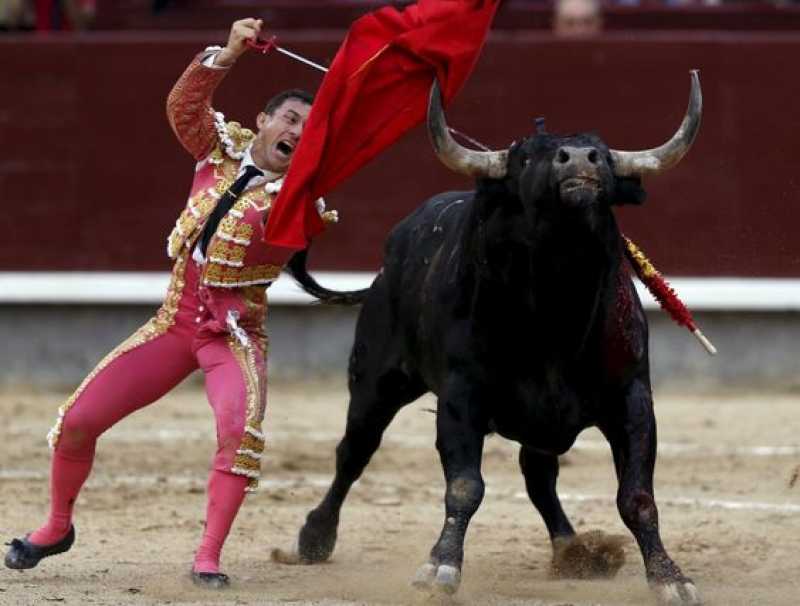Spain is a land of mysteries. If you have ever visited Spain then you’d know this. There is something about the Spanish sun, the Spanish breeze and the Spanish water that takes you on a mysterious joyride.
Spainish Culture has a rich historical backdrop that has made it today one of the mascots of weird adventures. Like the bullfight. This tradition belong to the roman times but today however much the animal rights activities protest against it, it still is flaunting and thriving like the glorious emblem of adrenaline rush sports.
Similar to this there is the La Tomatina festival celebrated every year on the last Wednesdays of August. Very few people know about its origin. Why it started, why is such ripe, mature tomatoes thrown at each other. But still, it is something which everyone wants to be a part of. Just like these there are plenty of weird cultures that Spain greets you with.
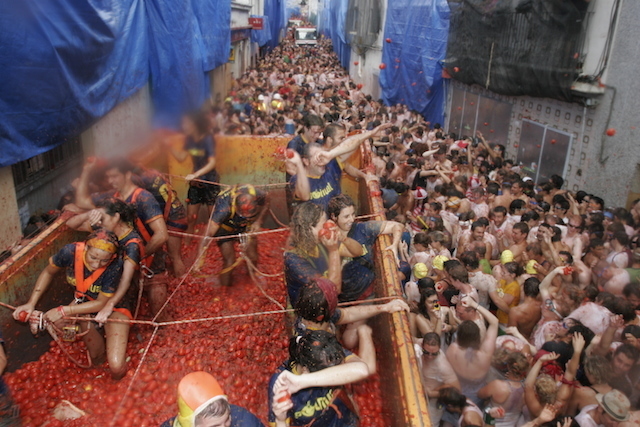
source: www.huffingtonpost.com
The Spanish have a way with their celebrations just like a way with their words. Yeah, just like they love to make Charles Dickens to Carlos Dickens, the Spanish people know their La festivities better than anyone else.
To help you have a full dose of Spanish cultural blood rush, I’ve described below some unknown and mysterious cultures and traditions that are celebrated in Spain till date and which astonishingly so is still unknown to most of the world.
You might also like to read: Venture into the adventure capital of the world, Queenstown, NZ
So spend time in darkness no more and get basked in the glorious and fiery sunlight of Spanish Culture, traditions and more of sangria!!! 🙂 🙂 🙂
Also Read:
Cheap Places to visit in Europe that'll get you to grab your passport right now!
Suggested Read: Top Places to visit in Europe in November to see the gorgeous colors of fall
Weird Spanish cultural traditions still unknown to the world
La Tomatina in Bunol:
The La Tomatina festival takes place on the last Wednesday of August each year. It is a popular tourist attraction today so much so that you even need an entrance ticket these days to be a part of the frenzied festivities of L Tomatina.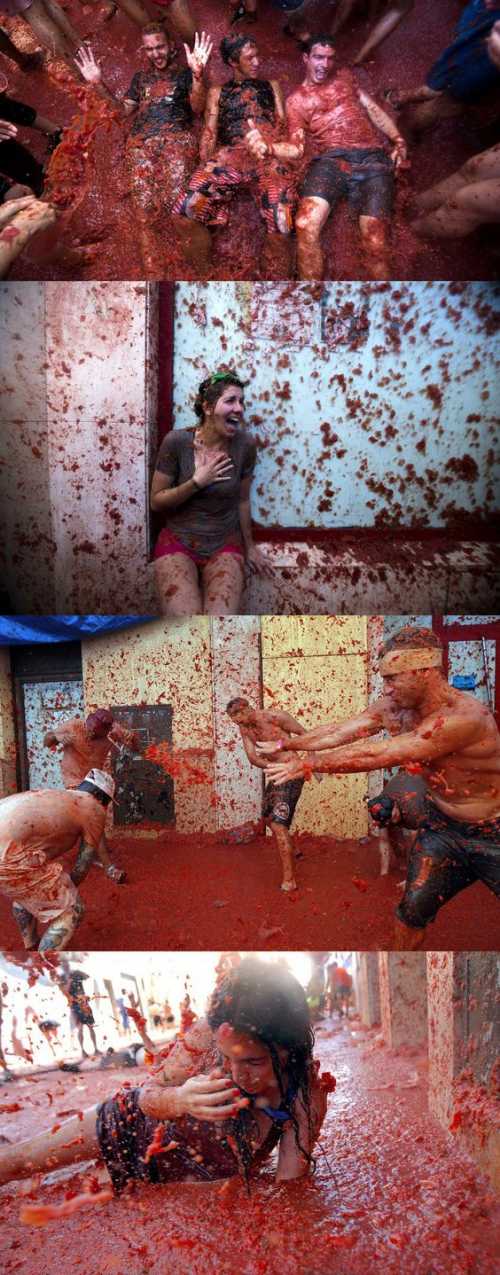
Source mashable.com
These days they allow only 20,000 people to take part in the festival. Very little is known about the origin of this festival, as a result, most people have their own story to tell. Still, it’s worth the info.
Some 70 years ago in the year 1945 on the last Wednesday of August, the locals of Bunol wanted to be a part of the special parade with the big shots, music artists and public figures of that time. It was a huge crowd and accidentally one participant got knocked down by another due to the unmanageable mob. The person who fell down got up so annoyed that he started throwing tomatoes at the person who he thought was responsible for the stampede. Many people along with him did the same and a full van of ripe tomatoes got wasted when it was thrown at each other in a fit of rage and anger.
The next year, some youngsters of Bunol decided to relive the similar incident and the incident got banned by the police authorities.
But the frenzy and enthusiasm which had gripped the hearts of the locals weren’t satiated. So they tried it again and in the year 1957 this was banned and as the sign of protest against this festival, tomato was buried.
People marched along to funeral tunes as they carried a coffin full of tomatoes for burial. But slowly this festival got so popular in all corners of the country that finally in the year 2002 this was officially marked as a festivity of international tourists by the secretary department of tourism of Spain.

source
Since then every year millions of tourists flood Bunol to be a part of La Tomatina, to fight with tomatoes and enjoy the frenzied and adrenaline atmosphere in dripping tomato paste.
Must Read:
Do you know the story behind the National Dish of Spain? Paella Valenciana History Revealed
Also Read:
Los Indianos:
Los Indianos is celebrated as a form of parody that rejoices on the return of islanders from the Americas. These people who had previously immigrated to Cuba and Latin America, when returned to the Spanish soil bragged no ends about the riches of the Indians.
Suggested Read: Exploring Cuba as a First-timer
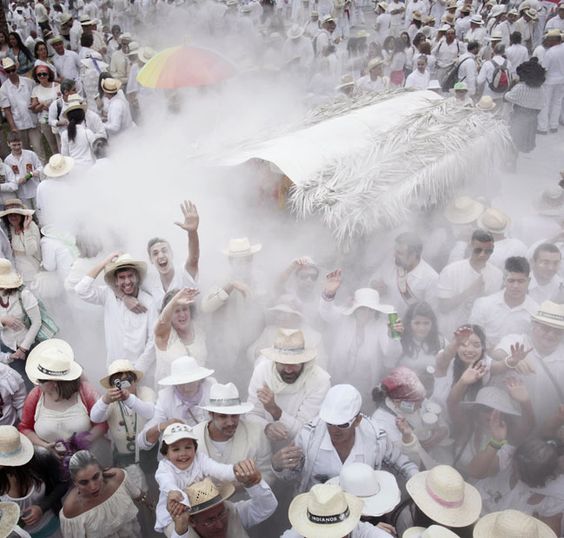
source: www.telegraph.co.uk
Hence to commemorate this day they celebrate until late night. They wear the traditional dress of Guayabera with white pants along with the Panamanian hat and play with talcum powder. Women dress elegantly in white costumes and laced umbrellas with traditional jewelries.

source
The most important part is the suitcases which is filled with money and carried along that symbolizes the wealth brought by the Islanders after ruling the Indians. This is celebrated in the capital city of the island of La Palma, Santa Cruz de La Palma on every Monday of the Christian festival of Carnival.
At around 12 in the morning, the atrium of the city council La Espera, a reception is hosted for all the Indians with Cuban music along with the delightful sugarcane, molasses, and mojito. At mid-afternoon, a parade of Indians commences from Avenida de Los Indianos to Plaza de LA Alameda where party lasts until late at night till 4 in the morning.
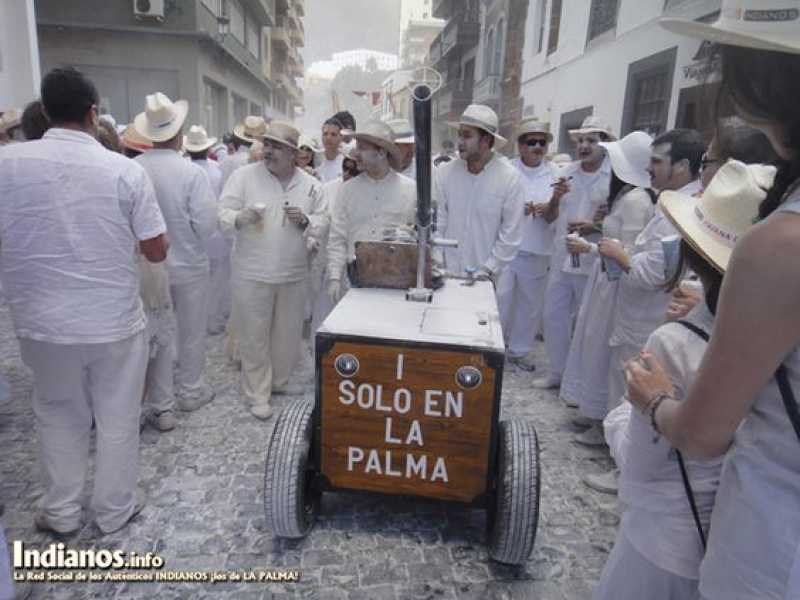
source: www.larevistadelapalma.com
The Indians carry suitcases along with them. Trunks and cages with tropical animals and some black servants are taken along. Pure also called the cigar pure is a rudimental part of the festivities.
Also Read: “Dive into the charm of this Saturday city!: Explore Must visit sights in Barcelona,Spain
Rapa das Bestas:
This literally translates to the "Capture of the beasts". This is a traditional festival held in Galicia region of Spain.
Here the wild horses from the mountain regions are brought down and their manes are trimmed.
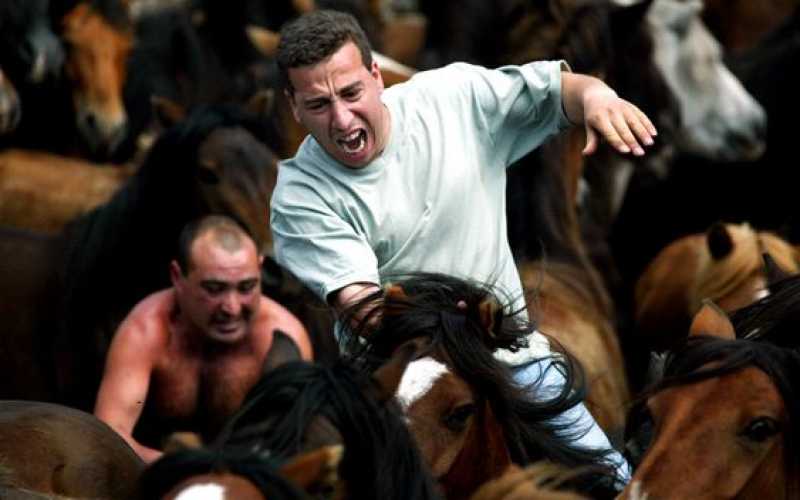
Source: in.pinterest.com
The best of this festival can be witnessed in Sabucedo’s city hall, A Estada, where this festival is celebrated for three days, i.e., the first Saturday, Sunday, and Monday of the month of July. The ‘aloitadores’ who are responsible to control these wild horses uses nothing but body skills to tame the horses and trim their mane.
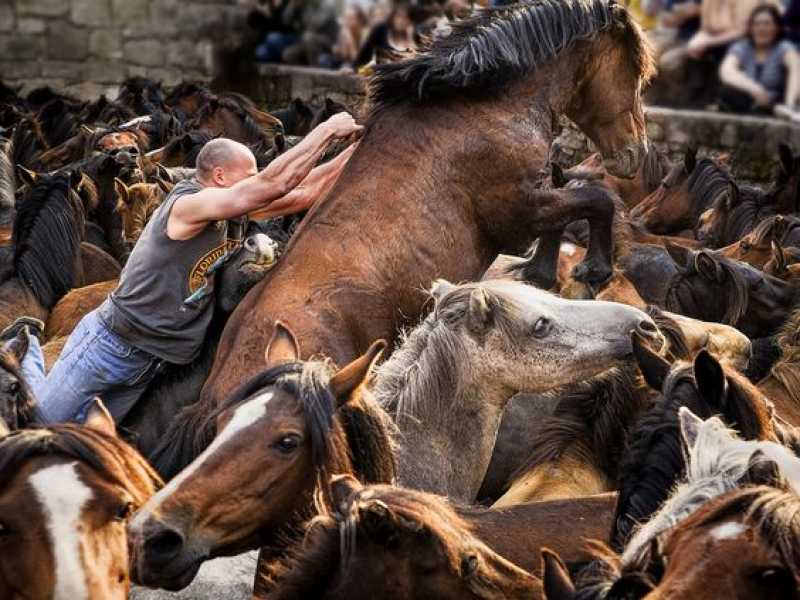
According to some scholars, the ‘Rapa’ actually is a mark of passage of a boy from childhood to adolescent, who are able to seize down a foul and trim its manes called as ‘marking of a foul’, with the assistance of elders. This celebration has been in practice since the 18th century and people say it’s been there since Roman times. A trip to Galicia in July is incomplete until you witness this.
Antzar Eguna:
Antzar Eguna is the day of the Geese. This festival is being celebrated in Spain since the 16th century.
In this, a young man is made to get the head of a Goose which hangs on a rope above the boat. The man has to jump off and catch hold of the head of the goose and tear it off.

source: www.vanguardia.com
To add to the fun the rope is pulled by visitors from both sides and the person who wins gets to keep the goose. This tradition gets its relevance from early days when Spain’s Basques actually witnessed a matriarchal society where men were responsible for hard labor-oriented work and however was strong enough to get the goose, got to marry the women of their choice. The women were estate holders who managed lands and properties.

source: www.reuters.com
Although this is criticized a lot by animal rights activities as downright cruel and painful, hundreds of visitors still flock down to see the proceedings of this adrenaline junkie’s heaven.
You might also like to read:
Best Places to visit in the World in 2019 as per Lonely Planet
The list of Best Value travel destinations of 2019 as per Lonely Planet
Bullfighting:
Called Corrida de Toros or La Fiesta, bullfighting is a famous traditional sport happening in Spain, Colombia, Peru and many other countries for a long time.
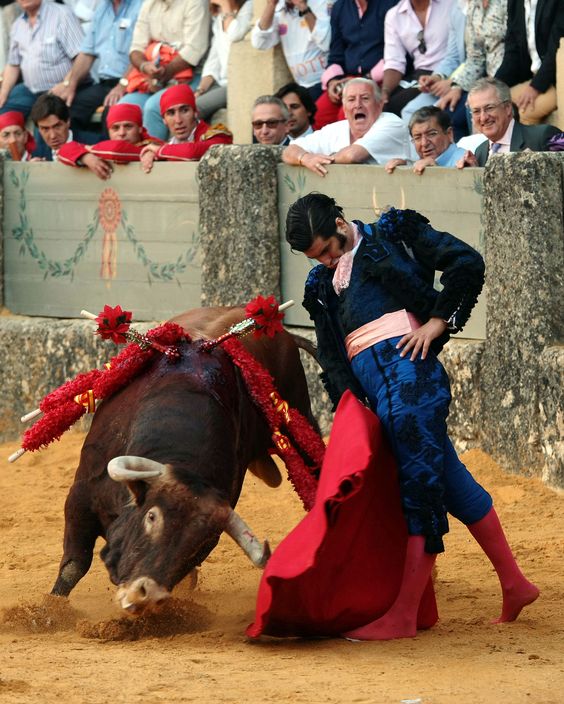
In this, a Matadores dances around and incites the bull and then fights it. Each Matadores have six assistants who help him in the fight.
source: www.reuters.com
The victorious Matador kills the bull by passing his sword between the shoulders of the bull and puncturing his heart. Then horses and mules drag out the dead animal and finally, the bull is sent to the slaughterhouse.
So these were some weird and unique cultural traditions which the Spanish people believe in fervently and are proud of it. Spain celebrates these traditions and it’s this uniqueness which draws millions of visitors who love to take part or witness such traditional celebrations and enjoy the beauty of this country. If you liked this post, then find some time to share this article on your social media pages. Until next time! 🙂

